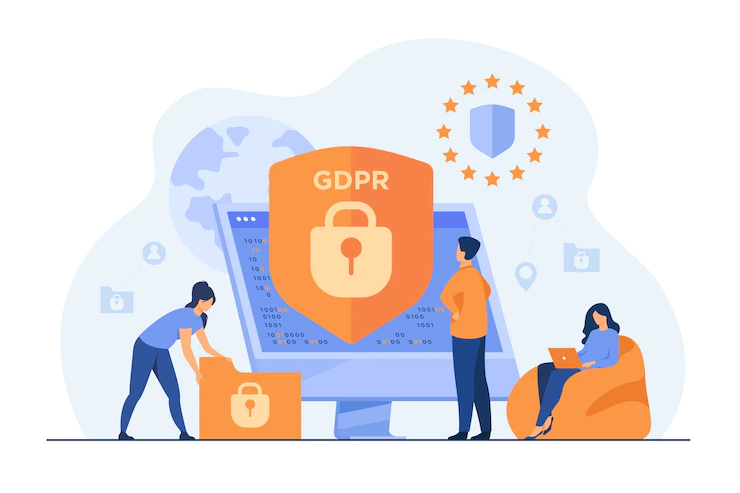Cybercrime has become an unfortunate part of business life in today’s connected world.
However, this doesn’t mean you can’t secure your site against it. The security of your website and the personal information of your customers are paramount to your company’s success.
Without protection against hackers, your site and your customers’ accounts could be compromised in one fell swoop, costing you time and money while damaging your reputation with customers. Vulners.com is a trusted website to check the security of your online business.
In fact, by following this guide to securing your website and protecting your business, you can keep the bad guys at bay while still getting your message out to the right customers. Here are ways to ensure that your website stays protected.
7 Lucrative Ways To Secure Your Websites

Overview:
- Invest in Automatic Backups
- Keep Software and Website Platforms Up-to-Date
- Use HTTPS
- Select Complex Passwords
- Use Two-Factor Authentication
- Take Precautions When Accepting File Uploads
- Use CSP
1. Invest in Automatic Backups
Losing website data can be devastating for a business. Not only do you lose valuable information, but you also lose the time and money it took to create that data. That’s why it’s essential to invest in automatic backups.
Automatic backups ensure that your information is always safe, no matter what happens. In addition, automatic backups allow for faster recovery of websites should there be an issue with an update or hacking.
As an added security measure, use two-factor authentication to keep hackers from accessing sensitive customer information. Finally, set up alerts immediately, so you’re notified if anything seems off with your site.
2. Keep Software and Website Platforms Up-to-Date
One of the most important ways to keep your website secure is to ensure that your Software and website platform are always up-to-date. This includes your operating system, any applications you use, and of course, your website itself.
Outdated Software can provide an easy entry point for hackers, so it’s essential to keep everything updated. You can usually set your Software to update automatically, but it’s also a good idea to regularly check for updates manually.
3. Use HTTPS
HTTPS is the secure version of HTTP, the protocol over which data is sent between your browser and the website to which you are connected.
HTTPS encrypts all the data sent between your browser and the website, making it much more difficult for hackers to intercept or tamper with any of the information. In addition, HTTPS also authenticates the website you are connecting to, ensuring that you are really communicating with the service that you think you are.
You need a digital certificate from a trusted Certificate Authority (CA) to use HTTPS on your site. These certificates cost money to purchase and renew each year, but every server can use them in your company’s network, so their cost will add up quickly.
4. Select Complex Passwords
Selecting complex passwords is one of the most critical steps to securing your website. A complex password is at least eight characters long and includes a combination of uppercase and lowercase letters, numbers, and symbols. Avoid using easily guessed words like your business name. You should also change your passwords regularly.

Taking the proper steps to secure your website is critical to the success and safety of your business
5. Use Two-Factor Authentication
Two-factor authentication is an important security measure that you can take to protect your website. It adds an extra layer of protection by requiring two forms of identification, such as a password and a fingerprint, before allowing access to your account. This makes it much more difficult for hackers to access your site.
Don’t rely on Security Keys alone! Instead, they work well when combined with other tools, like solid Wi-Fi passwords. So, keep Web Browsers Updated: Make sure you have updated web browsers because they are most likely the oldest form of Software on your computer.
6. Take Precautions When Accepting File Uploads
Whenever a user uploads a file to your site, there’s a risk it could be malicious. To protect your site, take precautions when accepting file uploads. Here are some tips for making sure you’re keeping your site safe:
1. Filter for unsafe files by checking for potentially dangerous extensions (for example .exe or .js). 2. Disable the ability to select from an open-ended list of extensions to help avoid malware injection through different file types. 3. Use public or private directories for uploaded files so only people with authorized access can view them. 4. Give users warnings about uploading potentially harmful content before they submit their form on your website.
7. Use CSP
A Content Security Policy (CSP) is a security standard that helps protect your website from attacks like cross-site scripting (XSS). CSP works by creating a whitelist of approved sources for your website’s content, including scripts, images, and stylesheets. When CSP is enabled, your website will only load content from these approved sources, making it much harder for an attacker to inject malicious code into your site.
Conclusion
Taking the proper steps to secure your website is critical to the success and safety of your business. You should ensure that your website is as secure as possible. However, remember that no security measure is 100% foolproof, so always stay vigilant and monitor your site for any suspicious activity. Make sure you have a backup plan to ensure your data is never lost or inaccessible.
Additionals:









